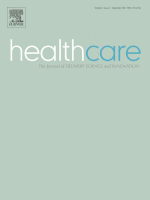
In an article published today in the Annals of Internal Medicine, leaders of the NIH Pragmatic Trials Collaboratory suggest that data sharing is not rising to its potential, and that more guidance is needed to prevent data sharing from becoming a “box-checking exercise.”
“NIH should consider guidance to help investigators and NIH institutional centers understand what needs to be shared, for what reason, and at what cost.”
The authors suggest that for data to be useful for new generative science or for reproducibility, the NIH should provide guidance regarding 5 important questions:
- What data should be shared and for what purpose?
- What do we mean by reproducibility?
- What metadata should be shared?
- What is needed for generative science?
- What are the immediate and ongoing resources needed to support data sharing?
The authors state that the moral and scientific arguments for data sharing are clear: it promotes transparency, honors the participation of individuals, and enables new discoveries. They also state that more work is needed to make data sharing a meaningful exercise.
“We hope that ultimately, data sharing will be conducted not simply to meet a requirement by a funder or a journal, but towards a goal of generating meaningful, re-usable data that can help us better understand and protect public health.”
For more, read the full article, and see the Living Textbook chapter on Data Sharing and Embedded Research.



